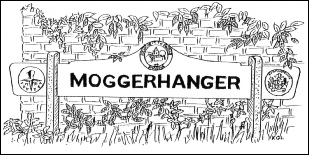
Last updated on 26 August 2015 at 12:46 PM
and
CHALTON
GORDON EWEN
Local astronomer
Born in Wigan in 1957, Gordon had what he would call an ordinary childhood, although the fact that his father was a local policeman on the beat had quite an influence on family life.
Gordon’s first love is astronomy, but after leaving school he went to Leicester University to read chemistry. He also did his PhD there in organic chemistry. On leaving Leicester in 1981 he got a job with the Wellcome Foundation in Kent and due to the various subsequent take-overs in the pharmaceutical industry, he found himself working for GlaxoWellcome in Stevenage, then for GlaxoSmithKline in Tonbridge, as Head of an R & D Department with 50 staff.
In 2008 he took advantage of a redundancy package offered by the firm in its bid to reduce staffing levels and at just 50 found himself able to do all sorts of new things. As a keen mountain walker he set about trying to complete his ascent of the Munro summits in Scotland, eventually completing 250. He also visited the Andes in Ecuador to ascend the 3 highest volcanoes in that country. And, of course, astronomy became, astronomy became possible again.
Gordon moved to Moggerhanger in 2012 from Stevenage, looking for somewhere with darker night skies, and he now has a small observatory which he will use to pursue his interest, and encourage the interest of others, in astronomy. His main interest is in getting photographs of the sun and objects in the night sky. He is chairman of the Letchworth & District Astronomical Society, which is currently working on a series of talks for the layman.
If anyone in Moggerhanger is interested to see the night sky through a telescope please email Gordon he’ll be glad to hear from you.
Below are three of Gordon’s pictures to give you a taste of what he does. The Crab Nebula is from Steveange, and the comet and solar image from Moggerhanger.
The Crab Nebula is the remains of a star that exploded in 1054. The picture is a total of 2.5 hours of exposure with a Canon DSLR camera, made up of 15 x 10 minute shots. The images were then combined to give a better quality image than a single shot. Interestingly, there is a row of 15 dots on the left side of the image. This is an asteroid tracking across the sky during the 2.5 hours it took to get the image. I managed to identify the asteroid (Annenski) using a combination of planetarium software and searching the Minor Planets Centre database over the internet.
Comet PanStarrs was taken on 1 April this year in the evening just after sunset. Another comet (ISON) is due to make an appearance in November/December this year.
The final image is of the sun is from 27 May this year. The telescope filters out all the suns light other than a part of the red end of the spectrum. This is where hydrogen, the main component of the sun, emits light and we can see lots of detail on the solar 'surface'.
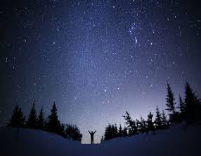
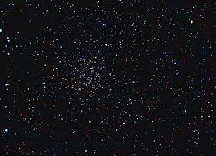
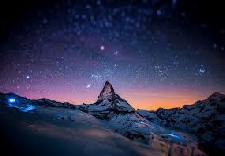
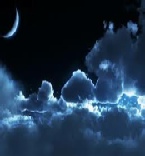
Gordon and telescope
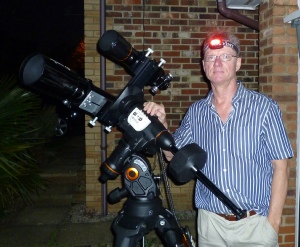
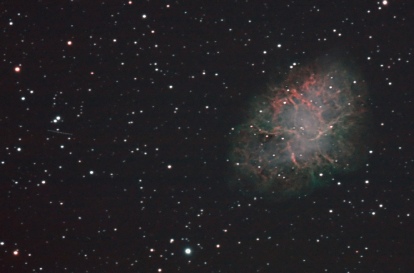
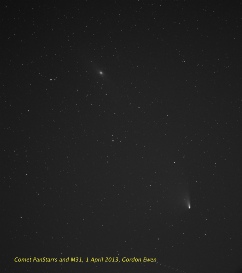
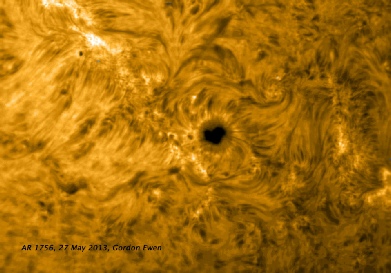
Crab Nebula
Comet PanStarrs
The Sun



